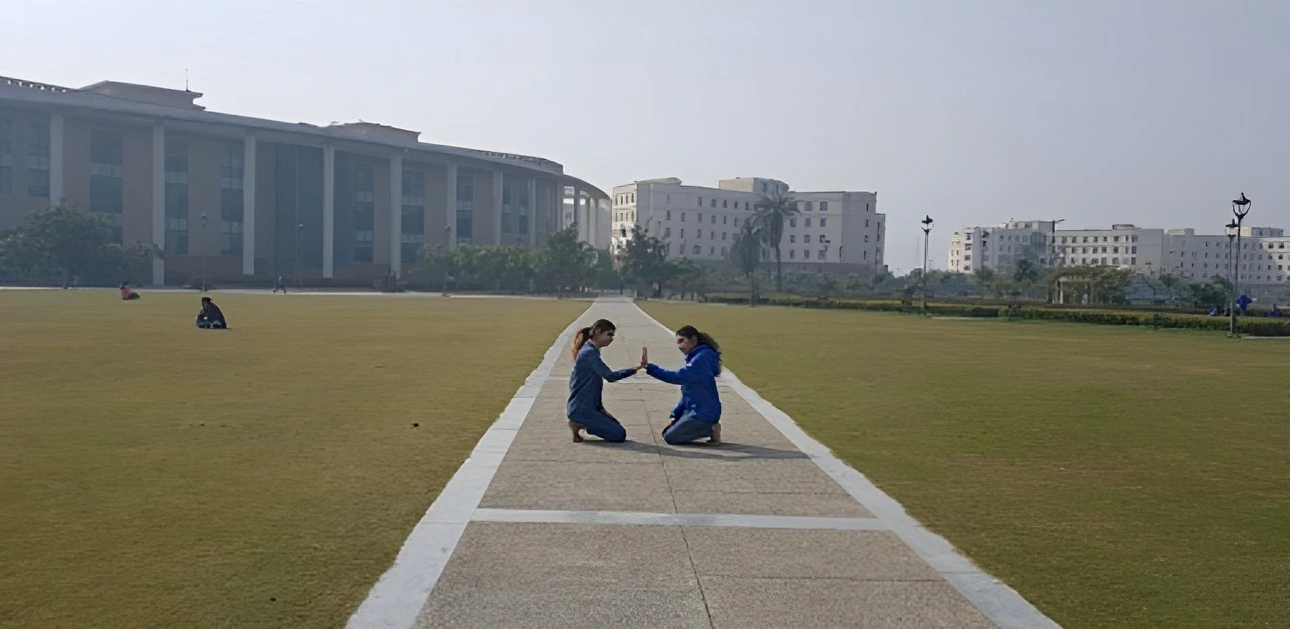Building a smart future brick-by-brick

Editorial / October 07, 2024
Have you ever imagined how studying a building material can give the past a future and present longevity? Research by Dr. Sumedha Moharana, faculty at the School of Engineering, is an example of the habit of multidisciplinary research at Shiv Nadar University.
Dr. Moharana works besides, working at a molecular level to increase the durability of structural materials is also about buildings that can communicate.
Implanting sensors using powerful probabilistic detection methods to evaluate structures continuously, the research provides real-time data to assess crucial information to assess the structure's health and remedial measures. Data collected from the multimodal sensors and their network provides crucial data that can prevent accidents, save lives, and reduce repair costs.
Smart sensors and actuation systems are carefully placed in crucial building parts that undergo stress. These sensors send predictive capabilities using advanced algorithms to be evaluated realtime.
Under Dr. Moharana's guidance, students undertake research in areas ranging from experimental design to AI model development. Much of her research work is supported by the Science and Engineering Research Board (SERB), a statutory body under the Department of Science and Technology (DST) of the Government of India.
"If smart systems are put in buildings and a study is undertaken periodically, a structure's life span can be stretched easily by 20 to 30 years," says Dr. Moharana.
The research is done at the Concrete Laboratory, which is home to an Instron Universal testing machine, Ultrasonic Pulse Velocity, Compression Testing Machine, Accelerated corrosion testing, electrochemical and mechanical impedance analyzer, Data acquisition systems, Compressive strength testing, Rapid chloride penetration test, among many other advanced equipment.
"Every structure built has a life span. As a building gets exposed to elements of nature like heat, cold, water seepage, rain, corrosion, and earthquakes, the materials used in the structure degrade; it's a natural process. Infrastructure degradation due to severe loading conditions poses serious disastrous consequences," says Dr. Moharana, an alumnus of IIT Delhi.
Dr. Lukesh Parida, who completed his doctoral research under the guidance of Dr. Moharana, developed a hybrid algorithm combining Convolutional Neural Networks (CNNs) and Long Short-Term Memory (LSTM) that could predict signals that the structure may face in the future.
But how does that connect the past, present and future?
Working at the university's state-of-the-art Concrete Laboratory and Dassault Systèmes Center of Excellence, she is collaborating with the Archaeological Survey of India (ASI) to study how India's historical structures can be preserved, and their lives extended for future generations to observe and study.
Dr. Moharana says, "Most protected monuments in India are built using brick and lime mortar; the method to make this mixture has been lost. To complicate matters, there is no documentation available to know this."
From the information availed through ASI, Dr. Moharana intends to recreate this lime plaster at the molecular level and put it through all the conditions it will face, such as pollutants, soil water, and stress. This study will aid the understanding of ageing process of traditional building material but also develop the novel coating material to slow down the process.
Ms. Smrithy Subash, working on her doctoral thesis under Dr. Moharana, is focusing on the development of novel corrosion inhibitors for the durability of reinforced concrete buildings. Her study includes the molecular-level simulation of advanced cementitious material and traditional lime, yielding sustainable construction practices by minimizing the environmental impact associated with concrete production and repair.
Besides ticking four United Nations Sustainable Development Goals like SDG 9 (Industry, Innovation, and Infrastructure), SDG 11 (Sustainable Cities and Communities), SDG 12 (Responsible Consumption and Production) and SDG 13 (Climate Action), Dr. Moharana's research sets its eyes on bridging the past, present and future to make a perfect fusion between science and society.
More Blogs

The Hawthornden Literary Retreat bestowed on Dr Sambudha Sen to complete the manuscript of a novel
Professor Sambudha Sen, Head of the Department of English at Shiv Nadar Institution of Eminence, Delhi-NCR, was awarded a residency at the...

The Power of the Moving Body
Movement is an innate bodily action that humans have been exhibiting for the longest time. Long before language was invented, the body was the...

How Does A Multi-Disciplinary Approach To Education Enhance Learning And Prepare Students For A Multi-Faceted World?
In today’s world, where businesses are changing almost every day, it is the responsibility of educational institutes to provide holistic...